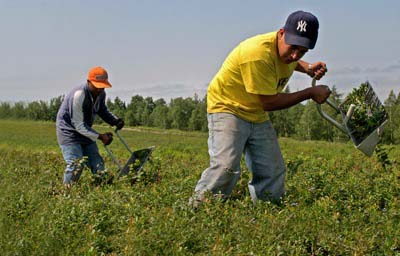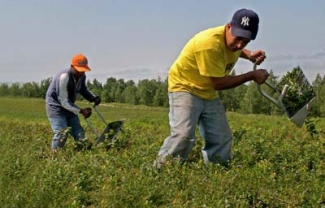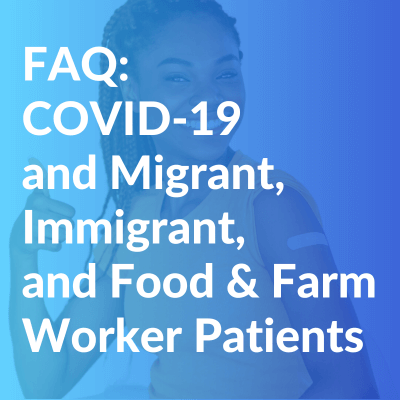Agricultural Health and Safety: Incorporating the Worker Perspective
Excerpt of this article taken from: Liebman, Amy K. and Augustave, Wilson 'Agricultural Health and Safety: Incorporating the Worker Perspective', Journal of Agromedicine, 15:3, 192 - 199
“We are proud to be farmworkers and proud to work. We are not looking for handouts. Work gives us dignity. At the same time, when policies and laws are decided, it is important that you please include us in that process. It is more dignifying that way.” - Wilson Augustave
 (c)earldotter.com (c)earldotter.com |
In the United States there are between 1 and 2.5 million hired farmworkers,1,2 who earn their living from agriculture, one of the most hazardous occupations in this country.3 Largely from Mexico and other Central American countries, hired farmworkers make up approximately a third of the farm labor work force.1 In addition to hazards such as working with heavy machinery and arduous physical labor, farmworkers endure exposure to pesticides, risk of heat illness, and often inadequate sanitary and housing facilities. Factors such as lack of training, poor safety precautions, language barriers, piece-rate pay, undocumented worker status, and geographical and cultural isolation can put these workers at increased risk for occupationally related injuries and illnesses and abuses. Farmworkers also face obstacles in obtaining health care due to high costs, lack of insurance, geographical isolation, and language as well as cultural barriers.
Despite the inherent dangers of farm work and the unique vulnerabilities of farmworkers, US health and safety regulations and labor laws for agriculture offer less protection to farm laborers than workers in other industries. There is a long history of farmworker exceptionalism under the law. However, this was not always the case. In the 19th century, living and working conditions in agriculture were not strikingly different than in other industries. Work in many industries, including agriculture, was characterized by hazardous and often primitive working conditions, long hours, and meager wages. Child labor was common and many workers endured extreme poverty. Immigrants, willing to accept low wages and dangerous work, supplied the labor for both agriculture and other industries.4 As other industries began to see greater protection, agriculture remained unchanged.
Reforms made during the Progressive Era through the New Deal period had a dramatic impact that transformed industrial labor in the 20th century. Child labor was prohibited or severely restricted in most industries. Overtime pay requirements helped limit the number of hours worked and minimum wage laws helped lift many laborers from crushing poverty. Workers' compensation laws ensured that workers injured on the job received medical care and payment for lost income. Moreover, industrial workers were granted the right to collectively bargain and be protected from employer reprisals. As a result of these changes, the standard of living of industrial workers improved dramatically.4
Download the full article Liebman, Amy K. and Augustave, Wilson 'Agricultural Health and Safety: Incorporating the Worker Perspective', Journal of Agromedicine, 15:3, 192 - 199
- Log in to post comments






